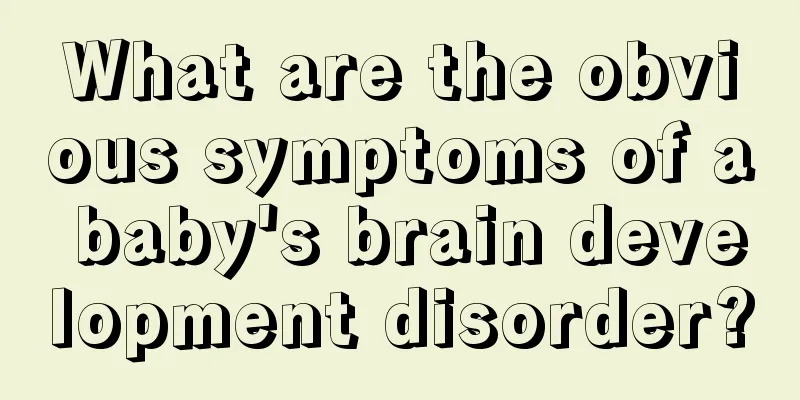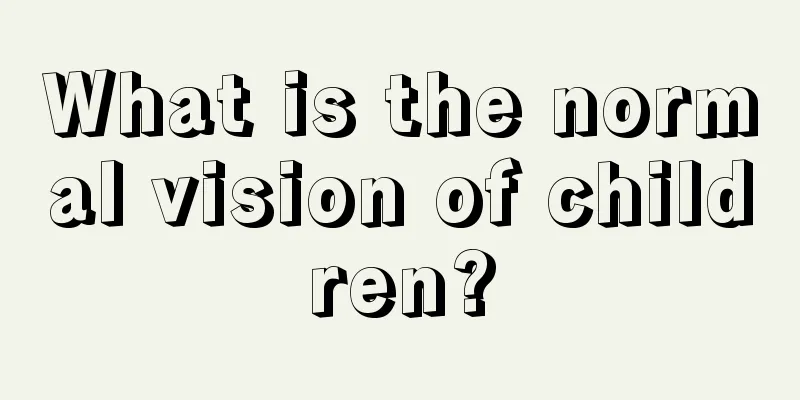What are the obvious symptoms of a baby's brain development disorder?

|
It is very common for babies to have brain development disorders during their brain development, which are mainly caused by obstacles to their cognition of the outside world. Parents can improve this through certain exercises and learning. Generally, when a baby has a brain development disorder, there will be obvious manifestations, such as intellectual disability and perceptual disorder, and then the language and posture will also be more obvious. 1. Intellectual disability and perceptual impairment Among all children with brain dysplasia, about 1/4 have normal intelligence, about 1/2 have mild to moderate intellectual disabilities, and about 1/4 have severe intellectual disabilities. Perceptual disorders: Most patients are allergic or unresponsive to stimuli; some experience fixed perception, disordered background and graphics. 2. Visual and hearing impairment Many children with myopia or strabismus, which is more than strabismus. Hearing loss is more common in the hands, feet, hands, and brain development. Children with developing brains often have difficulty recognizing the rhythm of sounds. 3. Growth and development disorders Some children with mild cerebral dysplasia may have basically or nearly normal growth and development, but most children with cerebral dysplasia are shorter than normal children of the same age and their growth and development appear to be retarded. 4. Language barriers Most children with cerebral dysplasia may have varying degrees of language disorders, some of which manifest as difficulty in language expression or word formation, some as unclear pronunciation or stuttering, and some even as aphasia, that is, they can understand other people's language but cannot speak themselves. This situation is particularly common in children with athetoid cerebral dysplasia. 5. Postural disorders Children with cerebral dysplasia have abnormal body postures, poor posture stability, awkward postures when exercising or at rest, and asymmetry between the left and right sides. In some severe cases, the head is often not in an upright and central position like that of normal children, but tends to lean to one side, or sway left and right, front and back. |
<<: Are the symptoms of Henoch-Schonlein purpura in children serious?
>>: This is what your baby can eat for dinner in a week
Recommend
What shoes are suitable for children and what should I pay attention to?
What kind of shoes are suitable for children is a...
How can children grow taller the fastest?
Height accompanies a person throughout his life. ...
Can children grow taller by eating Panax notoginseng powder?
Parents are generally worried that their children...
What should I do if my baby’s feet turn outward?
When the baby is just born, the appearance needs ...
Reasons for peeling lips in babies
Babies are a very fragile group of people. Peelin...
What to do if your baby is stuck by a fish bone
Fish is a very common delicacy on our table. In t...
What are the effects of eating sweets on babies?
Although sweets taste sweet and delicious, eating...
What should I do if my two-year-old child has a fever of 39.5 degrees?
New parents should all know that while taking car...
Methods for children to strengthen their physical fitness
Children nowadays are well fed and well clothed, ...
Can vitiligo in children be cured?
Vitiligo can occur not only in adults, but also i...
How many days is better to bathe babies in summer?
Babies are afraid of water and will cry and make ...
Dietary treatment for allergic cough in children, young parents please remember this!
If a child has an allergic cough and this symptom...
What to do if your child has ear pain during a fever
When children are at home, they may have a fever ...
How to treat baby's indigestion?
We all know that the digestive ability of a newbo...
Which newborns need fundus examination?
In developed countries such as Europe and the Uni...









